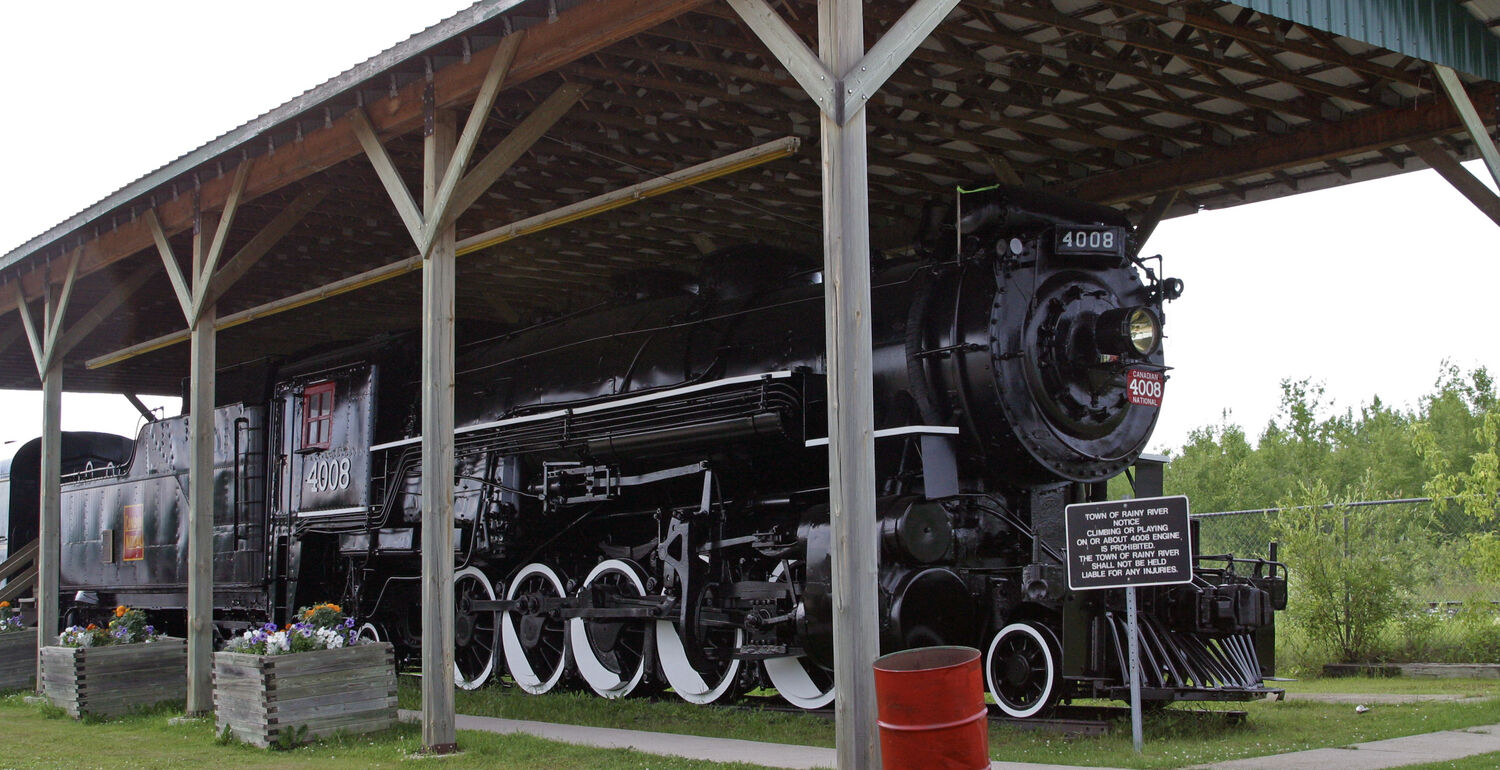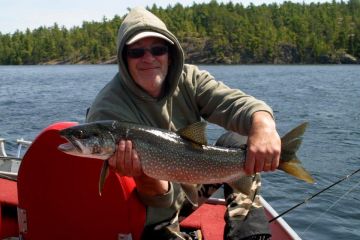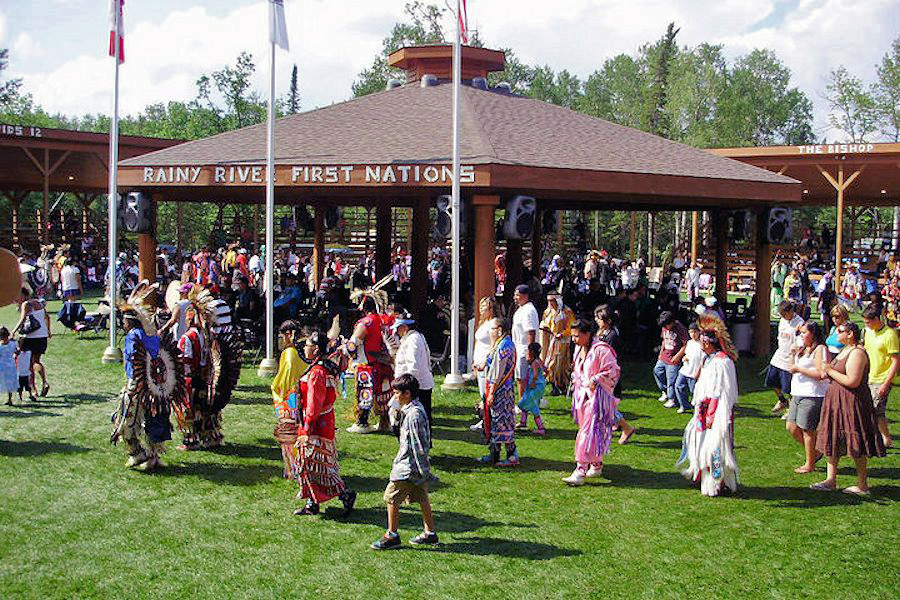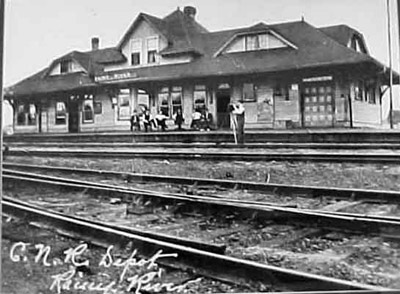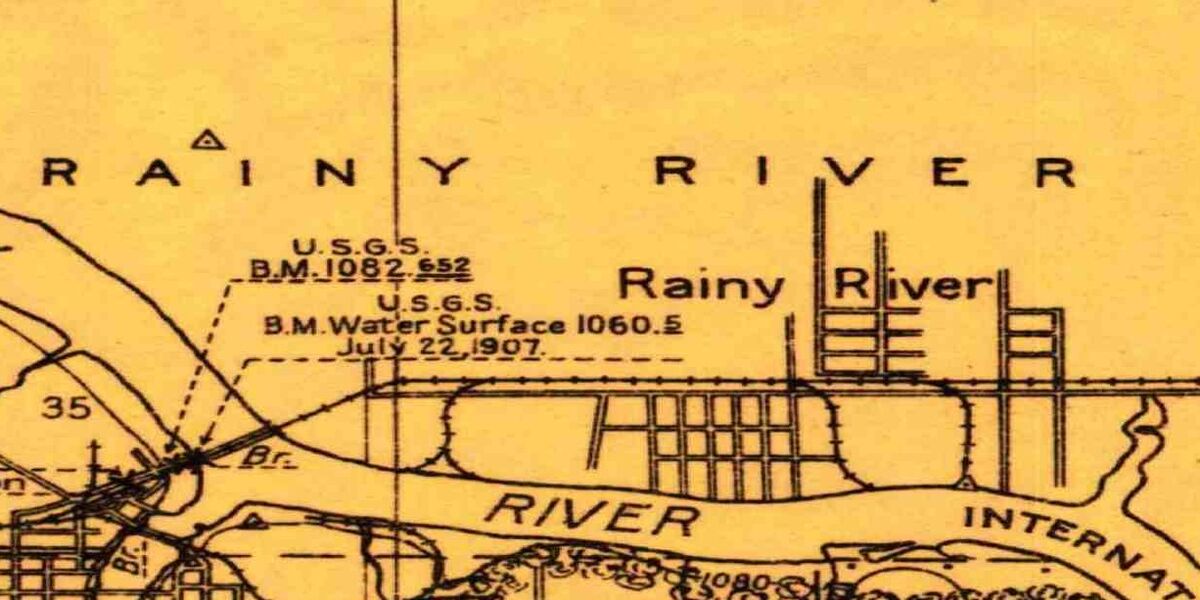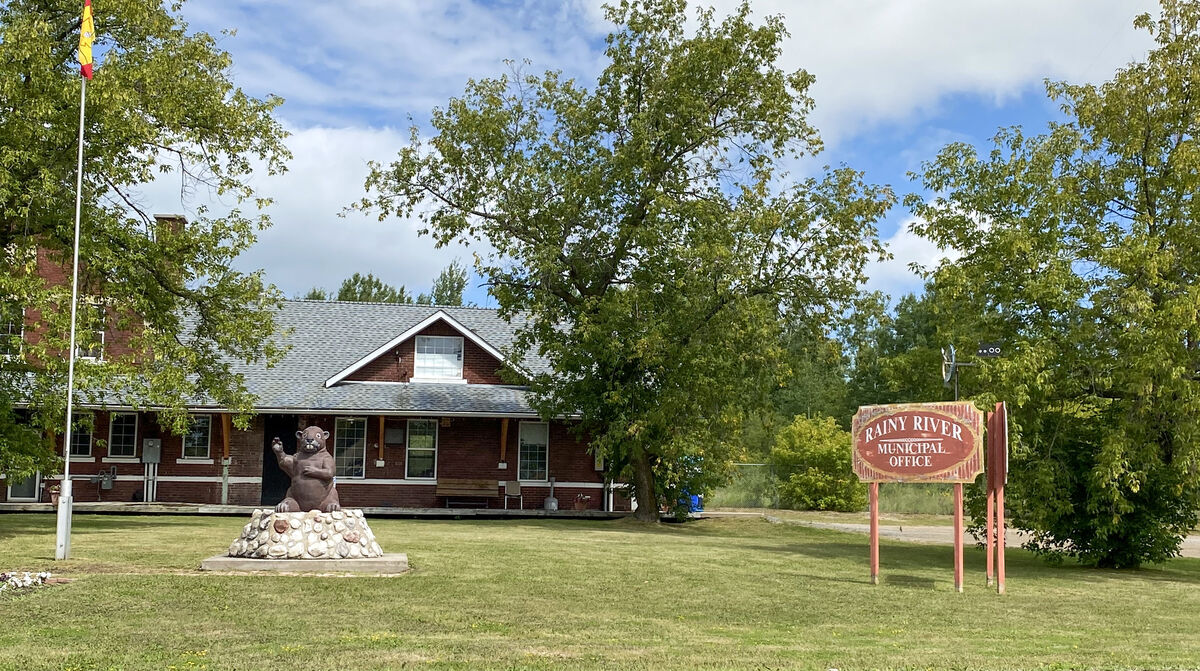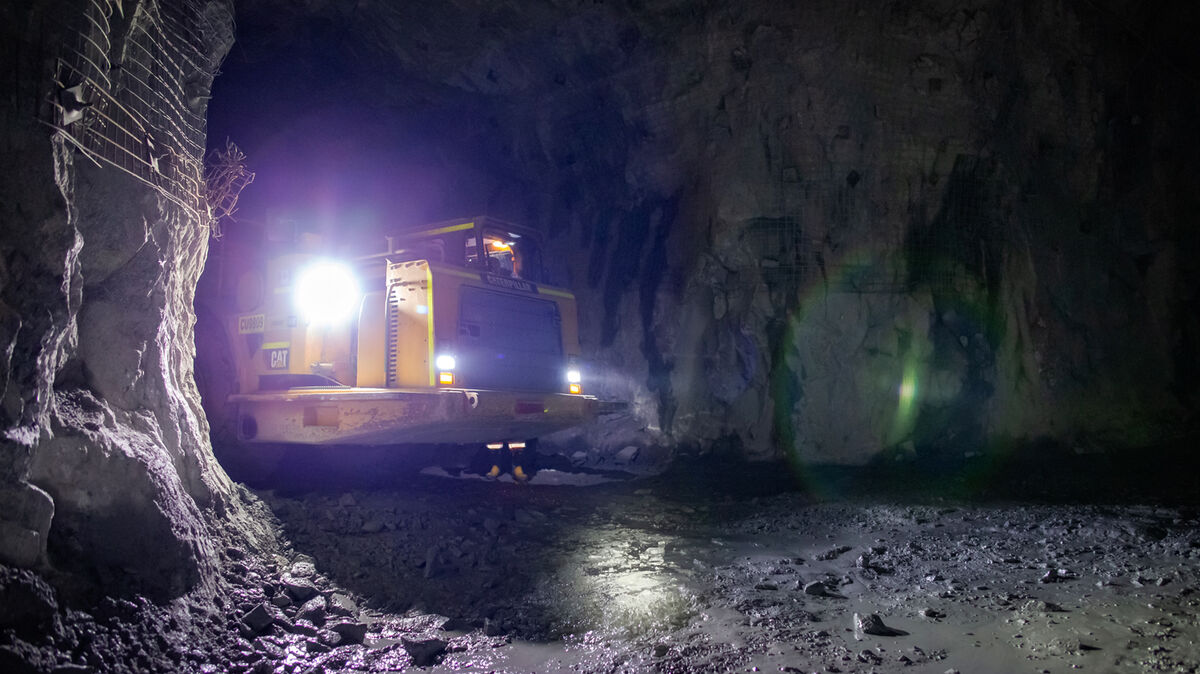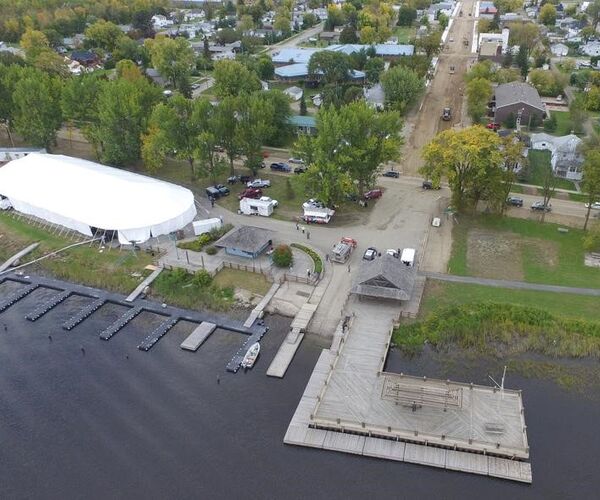It all begins with the Anishinaabeg of Treaty 3
The current site of the Town of Rainy River is located on land and the traditional territory of the Anishinaabeg people of Treaty 3. The spiritual connection to the land, the plants, animals and fish that live there were at the very center of their existence. This relationship is still strong today. The Anishinaabe are the modern-day guardians of the land base to this day, and environmental stewardship of their traditional territory and the well-being of their people and the indigenous communities as a whole is a top priority.
The indigenous people of the area were primarily hunter/gatherers and fishing obviously, was a main source of sustenance for centuries. These people were also traders, exchanging goods with other Anishinaabe, primarily along water routes in the region. Trapping and even agriculture (wild rice harvesting) were also important. Later on, with the arrival of Europeans, the people engaged in trading with the white population and were key harvesters of animals during the peak of the Fur Trade in the 1800s. The Anishinaabe cultural traditions can still be seen today through events such as Pow Wow ceremonies, oral histories conveyed through storytelling, and through speaking Anishinaabemowin, the dialects and language of the Anishinaabe people.
Indigenous First Nations Near the Town of Rainy River
- Rainy River First Nations (Manitou Rapids): Rainy River First Nations Website
- Mishkosiminiziibiing First Nation (Big Grassy River): Big Grassy River Website
- Naongashiing First Nation (Big Island): Anishinaabeg of Naongashiing Website
With reconciliation between Canada and the original indigenous peoples the focus of relations today, area First Nations are working on preserving traditional knowledge and their shared histories. Self-Governance and self-reliance are top priorities and these reflect the fundamental intent of Treaty 3 where Indigenous people agreed to share the resources in their traditional territory with the British Crown.
Given the dark history of colonialization in Canada, and the subsequent mistreatment of its indigenous peoples over the 150 years since Treaty 3 was signed, much work is left to be done but the good news is progress is being made. Indigenous communities in the area are growing rapidly and with the tools now available to them, contributing greatly to the area's economy in addition to their rich cultural contributions.
If you want to learn more about area First Nations then you should visit here.
The Arrival of Europeans
Early European explorers, primarily French Canadian fur traders and explorers showed up in the area around the 1680s, looking to expand the wealth of the Hudson Bay and Northwest Companies. Their arrival brought significant changes to the area. The fur trade also led to increased competition and conflict for some and a good living for others.
The first permanent European settlement in the Rainy River region was established in the 1880s - primarily along the banks of the river between Fort Frances and the current townsite. European settlement increased significantly when the Railway reached the area in 1901. The railway brought an influx of people who were attracted to the region's abundant natural resources, including timber, minerals, and fish.
During the late 1800s, the Canadian government began to encourage settlement in the region as part of its efforts to expand westward. The government offered land grants to settlers who were willing to establish farms and communities in the area. Many of the immigrants established small farming communities throughout the region. First established in 1894, the town of Rainy River was officially incorporated in 1904 and became the administrative center for the region.
Throughout the early 1900s to 1930, the population of Rainy River continued to grow as more white settlers arrived in the region. The town became home to a variety of businesses and services, including schools, churches, and an "outpost" hospital in 1928. With the railway as a major employer, it was a bustling town in those days. With the linking of the railway from Winnipeg to Port Arthur (present-day Thunder Bay) through Rainy River, the town grew rapidly beginning in the early 1900s the population was close to 1,000 people, if not more.At it's peak, the town and district population was close to 2,500 in the 1920s.
Modern-Day Rainy River
With a decline in Railway jobs since the 1950s, Rainy River looks a little different today than it did in its heyday in the first half of the 20th Century. Still, the town is resilient and today, has a more diversified economic base. As a gateway from the United States into Ontario's Sunset Country, Rainy River receives thousands of American visitors coming north to fish, hunt, or just get away. There is a Canada Border Services Agency Port of Entry and many tourists pick up goods in town as they pass through. Hannam Park and the Railway History display are definite must-sees, as is Kay-Nah-Chi-Wah-Nung Historical Centre in nearby Stratton. Don't miss the summer festival Railroad Daze held every July.
As there are many small farms - primarily beef farms - in the vicinity of the Town, Rainy River is somewhat of an agricultural service centre, although not to the degree that Emo is, which is located just 60 kilometres east on Highway 11. Agriculture is still an important economic sector with around 33,000 acres in use as pasture in the district. The New Gold Rainy River Gold Mine, located north of town, produced 235,000 ounces of gold in 2022. Rainy River is also a healthcare hub with Rainy River Health Centre providing a 24-hour emergency room, 3 acute care beds, and hosting 21 long-term care beds.
Today's Rainy River, while different from the past still retains what it always had. That is a quaint setting, with friendly people and all the benefits of rural living in a beautiful area of Ontario.

